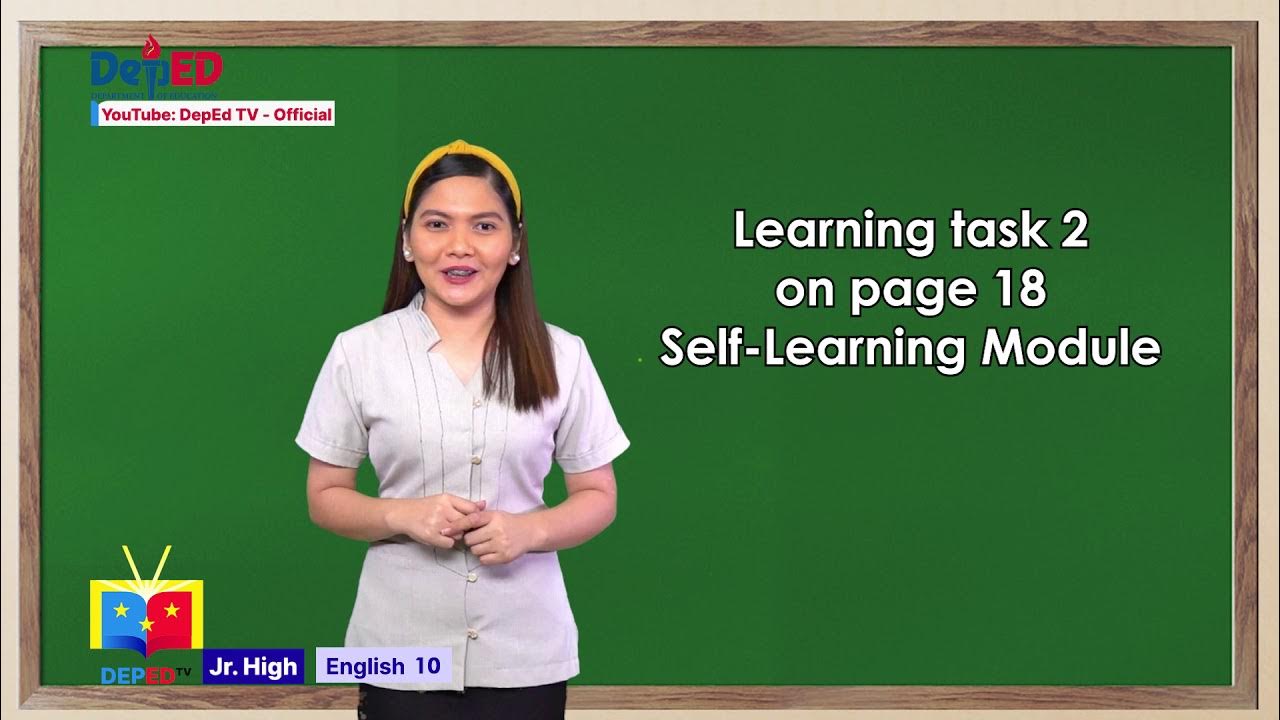Grade 10 English Q1 Ep1: Information from Various Sources (Part 1)
Summary
TLDRIn this educational video, English teacher Carla Hart takes viewers on an informative journey to understand the importance of identifying and verifying information sources. She introduces primary, secondary, and tertiary sources, using examples and activities to help distinguish between them. The lesson also includes a historical insight into President Abraham Lincoln's Gettysburg Address, emphasizing the value of primary sources in understanding significant events.
Takeaways
- 📚 The video script is an educational broadcast by an English teacher named Carla, focusing on how to gather and assess information from various sources.
- 🗂️ Carla introduces different types of information sources such as encyclopedias, interviews, state of the nation addresses, indexes, and bibliographies through interactive activities.
- 🕵️♂️ The importance of verifying the validity and reliability of information sources is emphasized, especially in the era of social media and the spread of fake news.
- 📷 The script uses a visit to Rizal Park (Luneta) in Manila as an example to illustrate the concept of primary sources, where firsthand experiences and observations are documented.
- 📚 Primary sources are original or authentic materials that report first-hand information about an event or topic, like photographs, speeches, and eyewitness accounts.
- 📝 Secondary sources provide analysis, discussion, or interpretation of primary evidence and are written by authors who did not personally witness the event.
- 📚 Tertiary sources are reference materials that compile information from primary and secondary sources, such as dictionaries, encyclopedias, and databases.
- 🔍 The script includes activities to help viewers distinguish between primary, secondary, and tertiary sources, with examples provided for each category.
- 🗣️ A historical example is given through the Gettysburg Address by Abraham Lincoln, which is a primary source document, to illustrate the significance of understanding the context of information.
- 📈 The script encourages viewers to engage with the material actively by posting about their own primary sources on social media and reflecting on the Gettysburg Address.
- 🌐 The video concludes with a reminder of the value of learning English and the importance of being discerning consumers of information in a world filled with various sources.
Q & A
What is the main topic of the video script?
-The main topic of the video script is about identifying and understanding different types of information sources and their validity and reliability.
What are the three types of information sources discussed in the script?
-The three types of information sources discussed are primary, secondary, and tertiary sources.
What is an example of a primary source mentioned in the script?
-An example of a primary source mentioned in the script is a photograph taken by someone who saw the event or monument with their own eyes.
What is an example of a secondary source mentioned in the script?
-An example of a secondary source mentioned is a commentary or an evaluation of a primary source, such as a written interpretation of a photograph.
What is an example of a tertiary source mentioned in the script?
-Examples of tertiary sources mentioned include encyclopedias, dictionaries, and databases, which are collections of primary and secondary sources.
What is the significance of the Gettysburg Address in the script?
-The Gettysburg Address is used in the script as an example of a primary source and to illustrate the importance of understanding the context of historical speeches.
What is the meaning of 'four score and seven years' mentioned in the Gettysburg Address?
-In the Gettysburg Address, 'four score and seven years' means 87 years, as 'score' is equivalent to 20 years.
What is the role of the English teacher in the script?
-The English teacher, Carla, guides the viewers through the process of identifying information sources, understanding their types, and analyzing their reliability.
What is the importance of knowing the types of information sources in the era of social media?
-Knowing the types of information sources is crucial in the era of social media to distinguish between credible and non-credible sources, to avoid spreading misinformation, and to protect against fake news.
What is the role of the State of the Nation Address (SONA) in the context of the script?
-The SONA is mentioned as an example of a primary source of information, being a yearly address by the President of the Philippines to Congress.
What does the script suggest doing with personal travel photos?
-The script suggests using personal travel photos as examples of primary sources and encourages viewers to post them on social media with the hashtag #dapecdaio_prime_resource.
Outlines

此内容仅限付费用户访问。 请升级后访问。
立即升级Mindmap

此内容仅限付费用户访问。 请升级后访问。
立即升级Keywords

此内容仅限付费用户访问。 请升级后访问。
立即升级Highlights

此内容仅限付费用户访问。 请升级后访问。
立即升级Transcripts

此内容仅限付费用户访问。 请升级后访问。
立即升级浏览更多相关视频

Grade 10 English Q1 Ep 7 Sources of information : Accessibility and Effectiveness

Grade 10 English Q1 Ep5: Plot, Setting and Characterization

Soundness of Author's Reasoning || Grade 9 English Quarter 4 Week 2

A Menemukan Informasi Aktual dan Akurat pada Teks Berita

Information from Various Sources || GRADE 10 || MELC-based VIDEO LESSON | QUARTER 1| MODULE 1

Who Can You Trust? Crash Course Navigating Digital Information #4
5.0 / 5 (0 votes)
